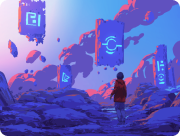Game economy design involves the strategic management and balancing of your game assets, enhancing player engagement, progression, and satisfaction. If you are, or want to become, a game designer and are seeking to enhance your craft, here are 19 tips to keep in mind for the next game.
1. Define clear goals:
Determine the nature of the experience you want players to get from your game, which will be your main guideline for the economy.
2. Understand your target audience:
Study player behavior, preferences, and spending patterns to tailor the game economy to their needs and motivations.
3. Control supply and demand:
Ensure that the availability of currencies, items or any other type of resources are properly balanced so that players can see value in each one, generating a more dynamic economy with more meaningful decisions.
4. Embrace scarcity and rarity:
Introduce rare and valuable items or resources to create a sense of achievement and exclusivity, driving player engagement.
5. Define economic policies:
Implement policies and measures to control the rate of inflation of your resources: do you want to have an unlimited supply, with its subsequent price increment, or a maximum supply?
6. Promote player collaboration:
Design systems that encourage players to trade, cooperate and interact with each other, fostering a vibrant and interconnected economy.
7. Monitor and adjust:
Continuously track and analyze the economy’s performance, player behavior, and feedback to make data-driven adjustments and improvements.
8. Encourage player retention:
Provide long-term goals and incentives with a lasting appeal that keep players engaged and coming back for more.
9. Implement a risk-reward balance:
Ensure that high-risk decisions offer correspondingly high rewards to encourage making mistakes, while, at the same time, reinforcing the learning process.
10. Provide a sense of fairness:
Strive for a fair and equitable economy, minimizing pay-to-win mechanics and offering avenues for non-paying players to progress.
11. Offer meaningful choices:
Design the economy to present players with interesting decisions that have tangible consequences, adding depth and strategy to the gameplay.
12. Foster a sense of ownership:
Introduce systems that allow players to create, customize, trade, or invest in virtual assets, creating a sense of ownership.
13. Consider the player lifecycle:
Account for the different stages of player progression and design the economy to cater to both new and veteran players.
14. Communicate economic changes:
Clearly communicate any updates, adjustments or additions to the game economy to players, maintaining transparency and managing expectations.
15. Experiment and iterate:
Don’t be afraid to try new ideas or make changes based on player feedback and data analysis to continually improve the economy’s balance and engagement.
16. Minimize friction in the trading process:
Streamline and simplify trading mechanisms, reducing barriers and ensuring a smooth and efficient player-to-player or player-to-game exchange.
17. Offer regular content updates:
Introduce new content, such as features, events or items to keep the economy fresh and stimulate player interest.
18. Balance realism and fun:
While realism can add depth, ensure that the economy remains enjoyable and engaging, prioritizing player enjoyment over strict realism.
19. Stay informed about industry trends:
Keep up-to-date with the latest trends, best practices, innovations and case studies in game economies.
To design a game economy that adjusts to the experience you are striving for, you need to use the right tools. While there are various game design tools, such as Quest, Twine or RPG Maker, you will need specific platforms to map out economic systems, like Machinations, spreadsheets or creating custom scripts .
Keep in mind that a successful game is about creating an experience that resonates with players, where every choice matters. Focus on players feedback, be open and transparent with them, and let your game economy be a dynamic force that enhances, surprises, and keeps them coming back for more.


